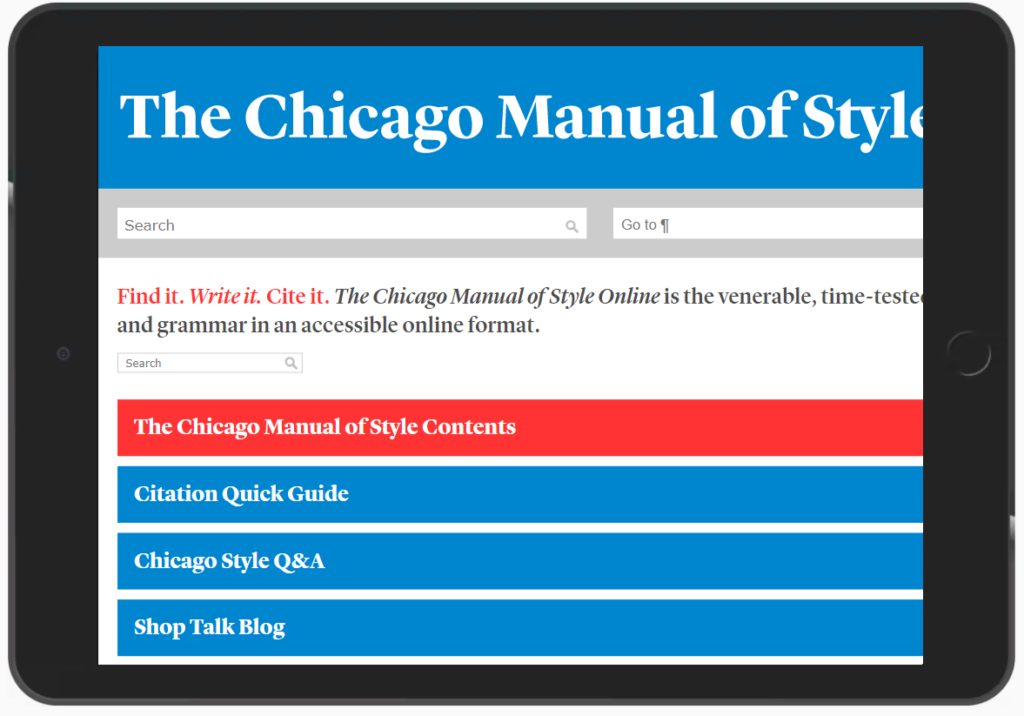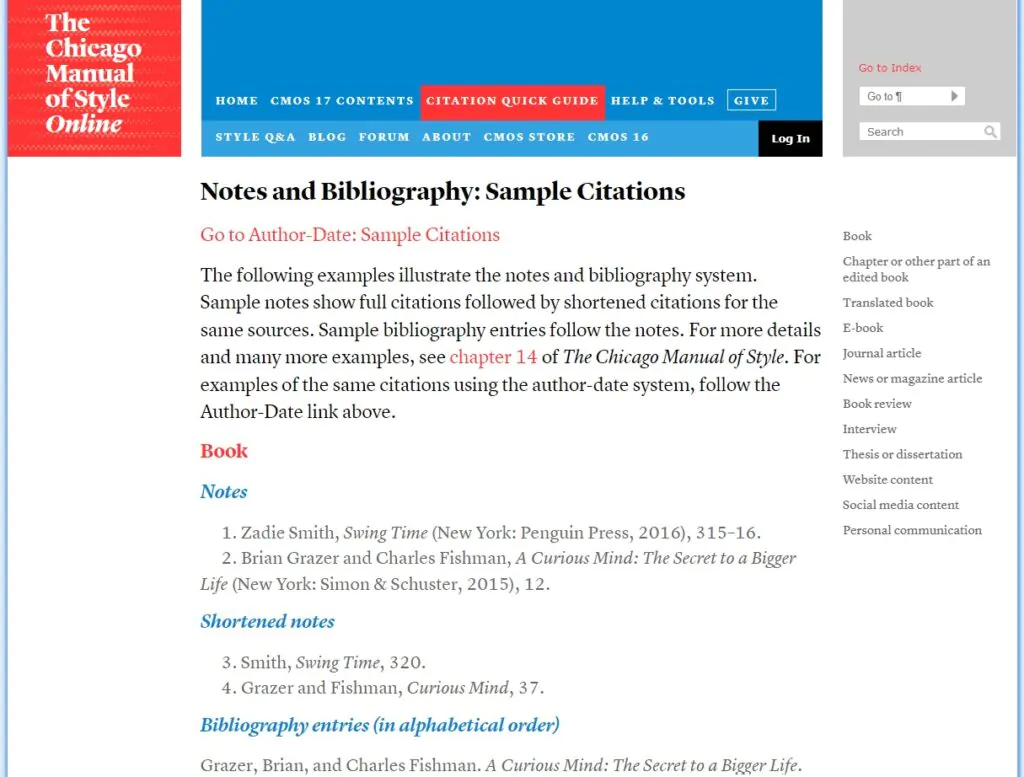Who uses Chicago style, and when do you need to follow the Chicago Manual of Style? Read on to see our definitive guide.
If you have been told to include text citations in your work, you have probably been frustrated by the numerous options for annotations, citations, footnotes, and endnotes. Some of the most popular citation styles include AP, APA, MLA, and Chicago style. Students frequently used Chicago style. Precisely, students in the humanities and social sciences follow Chicago style regularly. If you have been told to follow Chicago style, there are a few key points to keep in mind that we will discuss below.
Contents
Where Is Chicago Style Used?

Several subjects still follow Chicago style. This is still found mainly in the social sciences but can be seen in the natural and physical sciences from time to time. The most common subjects that still follow Chicago style include literature, history, and the arts. You might not use Chicago style very often, but it is helpful to know how to follow Chicago style if you are told to do so.
Understanding the Author-Date and Bibliography Styles
If you have been asked to follow Chicago style, there are two main styles to follow. The first is the author-date style, and the second is the bibliography style. The author-date system is frequently used if you are dealing with social sciences and natural sciences. In this system, you will use in-text citations. The author’s last name and the year of the publication should be included in the parentheses.
Unlike other citation styles, the author’s name is supposed to be included in the parentheses. The other section of the style guide is called the notes and bibliography system. This is mainly included if you deal with history, literature, and the arts. You will not see it as much in the hard or social sciences. In this citation style, the sources are formatted as endnotes or footnotes. Then, they are numbered.
Each number should match a superscript you should have in the text. The sources are also meant to be transferred to a bibliography system. This means that you will have a reference list at the end in addition to footnotes at the bottom of the page. This is particularly important if you are writing a dissertation and need to prevent a professional, finished product with page numbers.
Tips To Avoid Mistakes
It is easy to get confused, even if you have the 17th edition from the University of Chicago Style Guide. It is easy to get confused, but there are a few helpful tips to follow to avoid making common mistakes. Some of the most critical points you should keep in mind when you follow Chicago style include:
- Make sure that all of the text you include in the assignment is double-spaced. This is even true for block quotations.
- Do not use any quotation marks for block quotes. Instead, ensure the block quotation is on a new line, and the block quotation is indented.
- If you have long papers, you need to use subheadings. Use common sense with what you define as a long paper.
- You need to place page numbers starting with the first header that shows up in your assignment.
- Your page numbers should be written as Arabic numerals, not Roman numerals.
- Your margins need to be at least one inch on either side.
- You should pick a readable font, such as Times New Roman, and a readable font size, such as 10 or 12 point.
How To Design the Title Page
If you are writing a paper using Chicago style, it needs to have a title. You are free to put the title on a separate cover page or make it a portion of the first page of the text. However, there are a few guidelines you need to follow. They include:
- The title must be placed at the top of the page at the quarter mark. It needs to be centered on the page.
- Then, place your name at the halfway mark of the page. For example, if you are writing an assignment for a class, you need to include the information related to the class and the date of the assignment.
- If you have subtitles, the title line must end with a colon. Then, the subtitle needs to be placed on another line.
- Every line on the page needs to be double-spaced.
There are specific tools that can automate this process for you. Still, as the writer, it is your responsibility to review the work to ensure it is accurate, regardless of whether you submit a journal article or an essay for a class.
Headings Using the Chicago Manual of Style
If you are putting together headings following the Chicago Manual of Style, there are no fixed rules to follow. You have a great deal of flexibility in how you handle your headings and subheadings. The most important thing that you need to remember is that you should be consistent. Some of the tips to follow include:
- Pick a style for your headings and subheadings. Then, stick to that style as you write the paper.
- Make sure to follow title case to make capitalization easy. It is the same in the Chicago Manual of Style as in MLA style.
- If you use subheadings, ensure they also go on a separate line.
- Choose a different font size to make it easy to differentiate headings and subheadings, but make sure the font size is consistent among headings and subheadings. Of course, you need to choose the same font as well. Ideally, the same font should be used for the text and the headings.
- You are following title case with your headings and subheadings, so do not end them with a period.
You must also think carefully about how and where to use headings and subheadings. They can be a helpful tool to break up your work and make it easier to read, but you don’t want them to disrupt your flow too much.
In-Text Citations

You must make sure that you cite your work accurately to avoid any plagiarism issues. If you follow Chicago style citation rules, in-text citations usually come in the form of endnotes and footnotes. When you cite your sources, you need to use a superscript number after the paraphrase or quote. First, make sure the numbering is sequential in your work. Then, ensure the superscript numbers match the citation in the endnote or footnote.
The endnotes are usually done on a separate page, but the bibliography page should also follow them. If you are using footnotes, you need to place the footnotes at the bottom of the page on which they are referenced. It is not common to have parenthetical citations if you are following the Chicago Manual of Style. Remember that if you add a footnote to the page, some content might get bumped to the next page.
When you reference a citation for the first time, you need to include the author’s first name, the author’s last name, the title, the place it was published, the name of the publisher, the publication date, and the page numbers. Here is an example: George Orwell, 1984 (New York: Signet Classic, 1950), 51-53. If you are citing something that you have already referenced in your work, it is acceptable to shorten the citation to include the author’s last name, a brief title, and the page numbers from the text. Suppose you want to shorten the above citation. Here is an example: Orwell, 1984, 51-53.
The Works Cited Page
When it is time for you to put together your works cited page, it might be helpful to have The Chicago Manual of Style Online to help you. As a quick guide to the process, some of the essential points to keep in mind include:
- You can choose your title before you list the full citation and bibliography entry, but choose a title that makes sense, such as “Works Cited” or “References.”
- Make sure the page’s title is centered at the top of the page.
- When you include the entries in the list, leave two lines before you start the first entry. The other entries can be a year apart.
- When working with Chicago Style, having a works cited page is optional; however, if your teacher or submission reviewer requires it, ensure that the citations are included accurately.
Because it is optional, it is acceptable to take the footnotes and include them formatted as footnotes on the works cited page as long as the text size and font are consistent. All of the information you included in the footnote, including the author name, year of publication, title, publisher, and other components, should be included in the works cited page as it was in the footnote.
Why Do People Like Using Chicago Style?
There are a lot of people who are used to following MLA, AP, or APA style. For example, manuscripts looking to get published tend to follow the CMS style. In contrast, those writing for newspapers and magazines tend to follow Associated Press or American Psychological Association style. While this is a matter of personal preference in many situations, there are a few reasons why people continue to use the Chicago style.
One of the biggest reasons writers, particularly those in history and literature, use Chicago style is that there is a lot of flexibility. The writer is still given much freedom while giving credit where credit is due on the works cited page. Another reason people like to use the Chicago style is that the manual is easy to access and use.
Now, the manual is in its 18th edition, and experienced writers know where to find everything. If they don’t know when to use abbreviations or when to use particular punctuation, the style guide is accessible. Finally, it isn’t necessary to memorize everything about the Chicago Manual of Style because the CMS is always right there. While it can help certain types of writing go more quickly to have it memorized, this is not necessarily a requirement. It can take some practice to get better at Chicago style. It can be tempting to use an automated tool to make the process more manageable in the current era, but make sure you understand why things are formatted.
Are you interested in learning more? Check our guide on APA citations!
If you need help, check out our guide to the best citation manager.